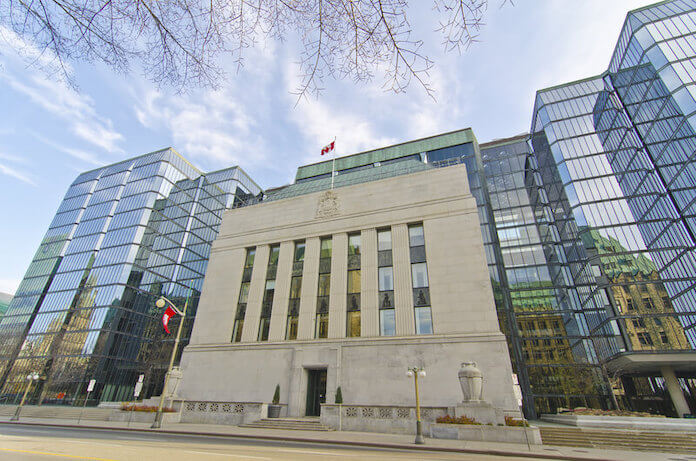The Bank of Canada bumped up its policy rate by 100 basis points to 2.5% Wednesday, surpassing the 75 basis point increase forecast. The bank is continuing its quantitative tightening as it fights to contain inflation.
According to the bank, inflation is abundant, higher, and more persistent than it anticipated in its April Monetary Policy Report and believes it will most likely remain around 8% in the months to come.
The Canadian dollar is up 0.2% against the US dollar, trading at US$0.7694. However, Invesco CurrencyShares Canadian Dollar Trust (NYSEARCA:FXC) is barely changed at $75.15 on Wednesday. Meanwhile, the iShares MSCI Canada Index Fund (NYSEARCA:EWC) is down 1.0%. While the Bank recognizes that the Ukraine war and supply chain interruptions have been the primary drivers of inflation, it also notes that “internal price pressures from excess demand are becoming more prominent.”
Monetary policy is only concerned with the demand side of the equation. Consumers and companies are less keen to take on more expensive debt when interest rates climb. As a result, demand should fall. The Bank of Canada estimates that Canadian GDP increased by 4% in Q2; growth is expected to slow to 2% in Q3. Bank stocks in Canada are in the red. The Toronto Dominion Bank (NYSE:TD) is down 2.1%, the Royal Bank of Canada (NYSE:RY) is down 1.4%, the Bank of Montreal (NYSE: BMO) is down 1.7% the Canadian Imperial Bank of Commerce (NYSE:CM) is down 1.3%, and Nova Scotia Bank (NYSE:BNS) is down 1.5%.
Bank of Canada Tries to Control Inflation
To try to help control inflation, Canada’s central bank increased its interest rate by 50 basis points to 1.5% last month. This was the Central Bank’s second boost of this magnitude. The Bank of Canada also said at the time that inflation is likely to rise before it subsides.
The Bank also noted that almost 70% of consumer price index categories show inflation over 3%, and the likelihood of elevated inflation becoming entrenched has increased.
The Bank plans to continue using its monetary policy tools to bring inflation back to target and to maintain inflation expectations properly anchored.
Featured Image: Megapixl ©Sml
















